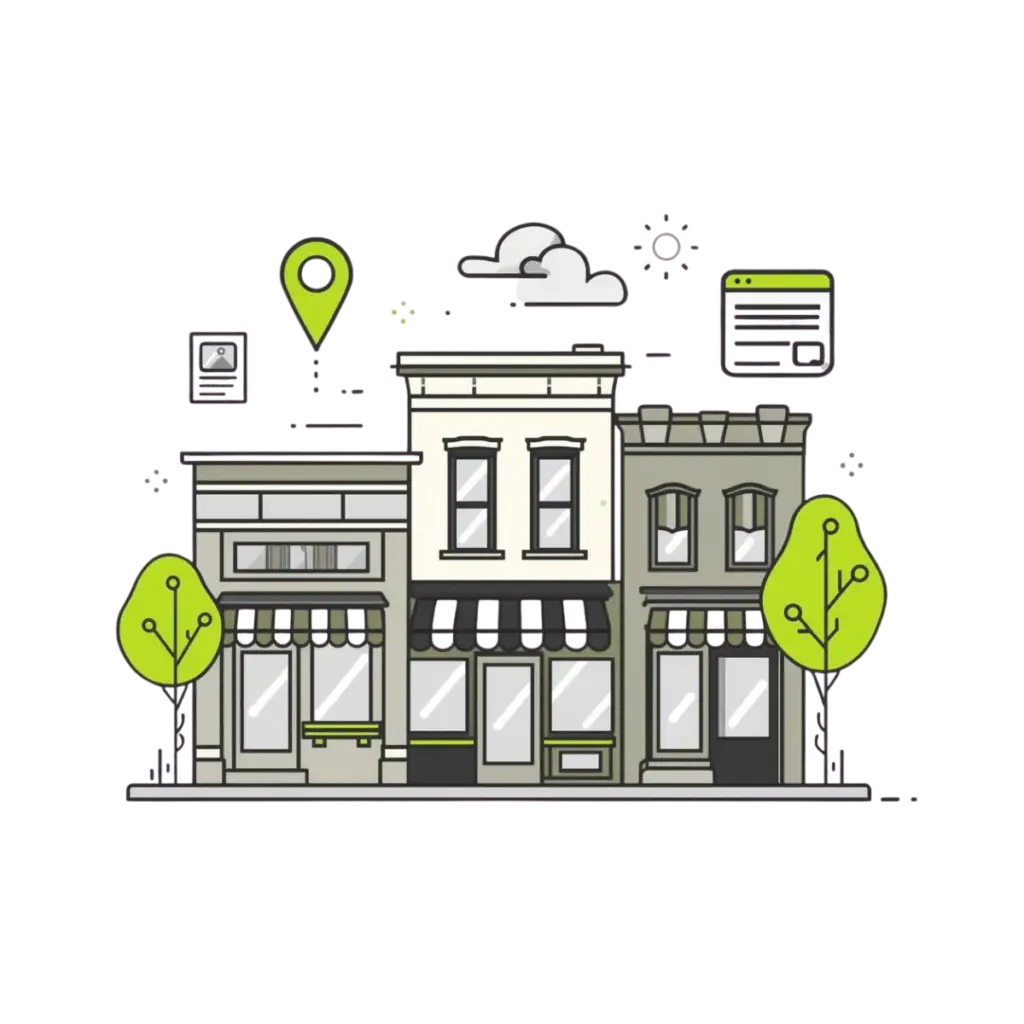November 9, 2025
SEO Content Marketing for B2C SAAS: A 90 Day Action Plan from Scratch

The B2C SaaS growth model is a game of scale, and with AI and new tech, the rules are changing at lightning speed. You can’t rely on a few big deals, you need to acquire thousands of users, efficiently.
The traditional approach is to pour money into paid acquisition, fighting for every click in a bidding war that only gets more expensive. But the most scalable, defensible growth channel isn’t bought, it’s built.
This isn’t a guide about A/B testing landing page button colors for a 1% lift. This is a 90-day action plan to build a content engine that acts as your top-of-funnel, onboarding specialist, and upgrade engine, all at once. We’ll show you how to stop renting traffic and start owning an audience, creating content at a scale that answers every question a user might have, turning “how do I do this?” searches directly into sign-ups, and making your product so easy to understand that a free trial becomes an inevitable conversion.
Why B2C SAAS Needs a Specialized SEO Content Marketing Strategy
For most B2C SaaS teams, the growth function is built entirely around paid channels because the ROI is immediate and trackable. Content isn’t seen as a viable acquisition channel because it doesn’t fit the short-term model, so it’s either ignored or under-resourced. The idea of shifting budget from a working ad campaign to a long-term SEO bet feels too risky.
The SEO content strategy isn’t to build a separate marketing function, but to create assets that pull double shifts. The tutorials, user guides, and feature explanations you create for SEO are the exact same assets your support team needs and your new users are looking for. By building a public-facing knowledge base that answers every “how-to” question, you’re not just investing in long-term SEO; you’re improving user onboarding and reducing support tickets today, making it a justifiable, high-leverage use of resources from day one.
3 Reasons Why SEO Content Marketing Matters for B2C SaaS
1. B2C SAAS SEO Content Marketing Builds Mainstream Trust and Category Awareness
For a B2C SaaS product, sometimes your biggest hurdle is often user skepticism or lack of awareness. Your content’s primary job is to build broad-based trust and educate the market on the problem you solve. By being the most helpful and accessible resource on a topic, you become the default, trusted name for a huge audience of potential users.
This is achieved by publishing a high volume of easy-to-understand, engaging content, such as:
- Beginner’s guides and “What is…?” articles.
- Simple tutorials and “how-to” videos.
- Relatable user stories and case studies.
This approach warms up a cold market and makes your brand synonymous with the solution.
2. SEO Content Marketing for B2C SAAS Drives High-Volume, Low-Cost User Acquisition
The goal in B2C SaaS is to acquire thousands of users without a sky-high Customer Acquisition Cost (CAC). A content engine is your most scalable, cost-effective tool for achieving this. It’s an owned asset that generates a continuous stream of organic traffic and sign-ups, reducing your dependency on expensive, volatile paid ad channels.
This is accomplished by creating content that directly answers the questions your potential users are searching for every day, including:
- “How do I [solve a specific problem]?”
- “Best app for [user’s goal].”
- “[Competitor] vs [Your App]” comparison content.
This strategy turns organic search into your most profitable and predictable growth channel.
3. It Creates a Viral Loop Through Community and Shareability
In the B2C space, the most powerful growth happens when your users become your marketers.
A great content strategy fuels this by creating a vibrant community and giving them assets to share. Your content can spark this viral loop by:
- Providing highly shareable templates, checklists, or quick tips.
- Creating “aha moment” content that explains a concept so clearly users want to share it.
- Creating a knowledge hub or forum where users can help each other.
When users are sharing your content to help their friends or colleagues, you’ve moved beyond simple acquisition and are building a self-sustaining growth engine.
90-Day SEO Content Marketing for B2C SaaS Action Plan (3 Phases)
Forget the old playbook that tells you to perfect your landing page for a 1% conversion lift. For a B2C SaaS company, the most scalable growth comes from building an audience, and that starts with velocity. The goal of the first 90 days is not to create a few viral hits, but to go from “no data” to “some data” as quickly as possible. This data is the fuel for a smart, user-centric content engine.
This is a bias-to-action plan. We’ll focus on minimal setup and maximum output, getting you into the rhythm of publishing content at scale and then using data to refine, not the other way around.
Phase 1: Setup & First Content Sprint (Days 1-30)
Your goal is to establish a rhythm of creation and go from zero strategy to a data-producing content machine.
Week 1: The 60-Minute Setup
- Your goal is to get “good enough” tools running, not a complex, expensive stack.
- Install Google Search Console: This is non-negotiable. It’s how you’ll get direct feedback from Google on what’s working.
- Install Google Analytics: Just get it collecting data. You don’t need complex dashboards yet.
- Keyword Tool: Pick one accessible tool. Options like Ahrefs’ free Keyword Generator or AnswerThePublic are sufficient. You need a tool for quick idea generation, not deep analysis yet.
The Mindset Shift & Ideation
- Your new model is to think and create in user-problem clusters of 5-10 articles at a time. Don’t get lost in abstract keyword research; your best ideas come from the problems your users are trying to solve.
- Brainstorm Your First Cluster (Start with What You Know):
- How do I…?” Questions: What are the top 10 “how do I get started with [your app’s core function]?” questions a new user has?
- Beginner’s Guides: “A Beginner’s Guide to [the Skill Your App Teaches]”
- Problem-Solving: “5 Ways to [Achieve Goal] Without [Common Pain Point]”
- Use Cases for Personas: “How [Student/Freelancer/Parent] Can Use [Your App] to Save Time”
- Find Programmatic Opportunities: Look for patterns. If you write “Best [Your App Category] App for iPhone,” you can easily create versions for “Android,” “iPad,” and “Web.”
Weeks 2-4: Your First Content Sprint
- Publish the Cluster: This is the most important step. Write and publish your first cluster of 5-10 articles. Aim for 80% good and 100% published. You can come back to add more GIFs or a video later.
- Interlink Everything: As you publish, make sure every article in the cluster links to the other relevant articles. This creates a web of topical authority from day one.
- No Heavy Promotion: The goal is to get the content live and indexed by Google so it can start gathering data on what your potential users are searching for.
Phase 2: Analyze & Amplify (Days 31-60)
Your goal is to use the first wave of imperfect data to make your next content sprint smarter and more targeted.
Week 5: The First Data Check-In
- Open Google Search Console and look at “Performance.” You now have real-world data.
- Find Your “Accidental Winners”: Look for pages getting impressions, even if they aren’t on page one. Which beginner guides or “how-to” posts is Google showing to people? Which questions are you actually getting impressions for? This data is gold—it’s the market telling you what it cares about.
Weeks 6-8: The “Amplify” Sprint
- Launch the Second Cluster: Based on your “accidental winners,” write and publish your next batch of 5-10 articles. If a guide on a specific beginner topic got impressions, double down on that topic with more intermediate-level content.
- The 90-Minute Tweak: Go back to your first cluster. For the 1-2 articles that showed the most promise, spend 90 minutes improving them. Add a short, engaging explainer video, embed a user testimonial from Twitter, or update the title to be more click-worthy.
Phase 3: Systemize & Scale (Days 61-90)
You now have a proven rhythm. The goal is to make it repeatable and more efficient.
Weeks 9-10: Build Your Content Machine
- Create a Content Database: Use a tool like Notion, Airtable, or even a shared spreadsheet to create a database of content ideas. Tag each idea with a user persona, a stage of the user journey (e.g., “Awareness,” “Consideration”), and its status. This is a living system for tracking ideas and results.
- Launch Your Third Cluster: Execute another content sprint. By now, you’ve published 15-30 articles and have a significant amount of initial data to guide your decisions.
Weeks 11-12: Level Up Your Tool & Strategy Game
- Deep Dive into Your SEO Tool: Take one of your “accidental winner” keywords. Now, plug it into a more powerful SEO tool (like Ahrefs or Semrush). Analyze the top-ranking pages. Are they using more visuals? Are their explanations simpler? Are they linking to other helpful resources?
- Refine Your Next Cluster with Data: Use these insights to plan your fourth content cluster. Your ideas should now be a hybrid of your own product knowledge and data-informed competitive analysis.
- Plan the Next 90 Days: Review all your data. You have a baseline for traffic and a much better understanding of what your potential users value. Your plan for the next quarter is clear: continue the high-velocity sprints, but now with a much sharper, data-informed edge.
Leveraging AI to Win the B2C Content Game
The 90-day plan you just read is about building a user acquisition engine. Artificial Intelligence is the high-octane fuel for that engine. For a B2C SaaS company, AI allows you to achieve the massive scale needed to attract thousands of users by answering every conceivable question they might have about your niche.
The losing strategy is to use AI to create generic, clickbait-style articles. Your users are smart and will bounce instantly. The winning strategy is to use AI as a tireless research assistant and first-draft writer, enabling your team to focus on creating genuinely helpful, engaging content that builds a loyal community.
The Smart B2C SaaS Workflow with AI
Dominate Top-of-Funnel Keywords: Use AI to rapidly generate ideas and drafts for hundreds of “how-to” and “what-is” style articles.
- Prompt AI to: “Generate 50 beginner-friendly article ideas for someone trying to learn [the skill your app teaches].”
- Prompt AI to: “Write a simple, easy-to-understand explanation of [a core concept in your industry].”
- This allows you to capture a huge audience at the very beginning of their journey.
The Real Challenge: Quality Control at Scale
When you’re publishing at a high velocity, the biggest challenge isn’t creating the content; it’s ensuring it’s all accurate, helpful, and on-brand. You need a strong editorial process and a clear content strategy to guide the AI and maintain quality. The AI can generate text, but it can’t build a brand or a community.
This is where a dedicated partner can make all the difference.
Ready to Take Your SEO & GEO Rankings to the Top?
Request your free site audit, and we’ll even include a sample article created for your business to get an idea of what we can produce for you at scale.
Blog
Explore Our Latest Articles
November 17, 2025
SEO Content Marketing for Local Businesses: A 90 Day Action Plan

Read Article
November 17, 2025
SEO Content Marketing for Financial Services: A 90 Day Action Plan from Zero

Read Article
November 17, 2025
SEO Content Marketing for Professional Services: A 90-Day Plan for Creating a Library of Expertise

Read Article
Ready to Take Your SEO & GEO Rankings to the Top?
Request your free sample article created for your business to get an idea of what we can produce for you at scale.
